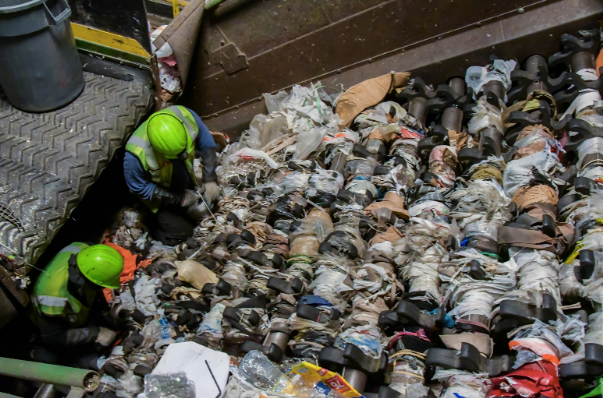We’re swimming in a sea of plastic, but not everything is as clear as we’d hope when it comes to solving the crisis.
It’s easy to get lost in labels like “biodegradable” or “recyclable” and think we’re doing good, but the truth is a bit more complicated.
Here’s a real look at the plastic mess we’re in, and some truths you might not know.
1. Companies Are Legally Allowed To Say Their Products Are Biodegradable Even if They're Not
Biodegradable has no legal definition in the US, and just alludes to the ability of an object to break into smaller pieces over time. But this time period could mean CENTURIES.
For example, there was an experiment done where researchers buried a biodegradable bag in both salt water and dirt, over a span of 3 years. After all this time, they were still in tact and strong.

2. Compostable Plastic Doesn't Actually "Compost" When We Throw It Away
Compostable plastic needs an aerobic (environment with oxygen) and heat to compost. Landfills are not these environments.

Even 60% of plastics labeled "home compostable" don't actually fully degrade after 6 months of being composted at home.
3. A product can say "recycled" but only be made up of 1% of recycled content.
This is a legal loop hole many brands use to greenwash us into thinking a product is sustainable, when it's really not.

4. Most of the time, "recyclable" products will never get recycled
Many times, when a product says "recyclable" it means that under very specific conditions, the product is able to be recycled. Meaning that just throwing it in your recycling bin won't actually get the job done.

For example, if you've ever tried to curbside recycle a "recyclable" bag, you probably just jammed the machines at the recycling center.
5. There's More to "100 Recycled" Than What You See
A product can be 100% recycled, while only consisting of 'pre consumer' plastic. Which is plastic that might have not even left the factory, but still counts as 'recycled'.

6. Plastic can only be recycled once or twice before losing its structural integrity.
There's only so much good that recycled plastic can do for us before it finally gets dumped in the ocean.

7. Micro Plastics And Their Chemicals Have Been Found in Breastmilk
Micro plastics and the thousands of chemicals in them have been found in our bloodstream, the clouds, our rainwater, breastmilk, and even the placenta's of infants.

8. We Eat a Credit Card Worth of Plastic Each Week
Microplastics has found it's way into our tap water, our bottled water, our teabags, our sea salt, our gum, our chapstick, our facial moisturizer, and even our air.

9. The US Exports Plastic Waste to Poor Countries For Them to Deal With
The US exports almost 1 billion pounds of scrap plastic each year to foreign countries because we don't have the want, or have the capacity to deal with it.
In recent years, countries have been trying to stop Western Powers from doing this because they no longer want to be a dumping ground.
If you're wondering what happens to the waste when it gets there, it often gets recycled due to lower labor costs making it efficient, or it gets dumped, or burned.

10. Landfill Plastic is Leaching Chemicals Into Our Soils
When plastic weathers, they release microcontaminants such as BPA into our soils and waters.
Many of these chemicals are nicknamed "forever chemicals" because they never go away, only accumulate.

Conclusion
The problem today is that eco friendly home essential products are very expensive. Making it inaccessible for many people who want to live plastic free or toxin free but can't.
That's why at Ecoternatives, we spent 3 years developing the world's first actually affordable eco store - all without compromising on quality, ethics, or sustainability.
Check out our plastic free home essentials - you won't believe our prices!


